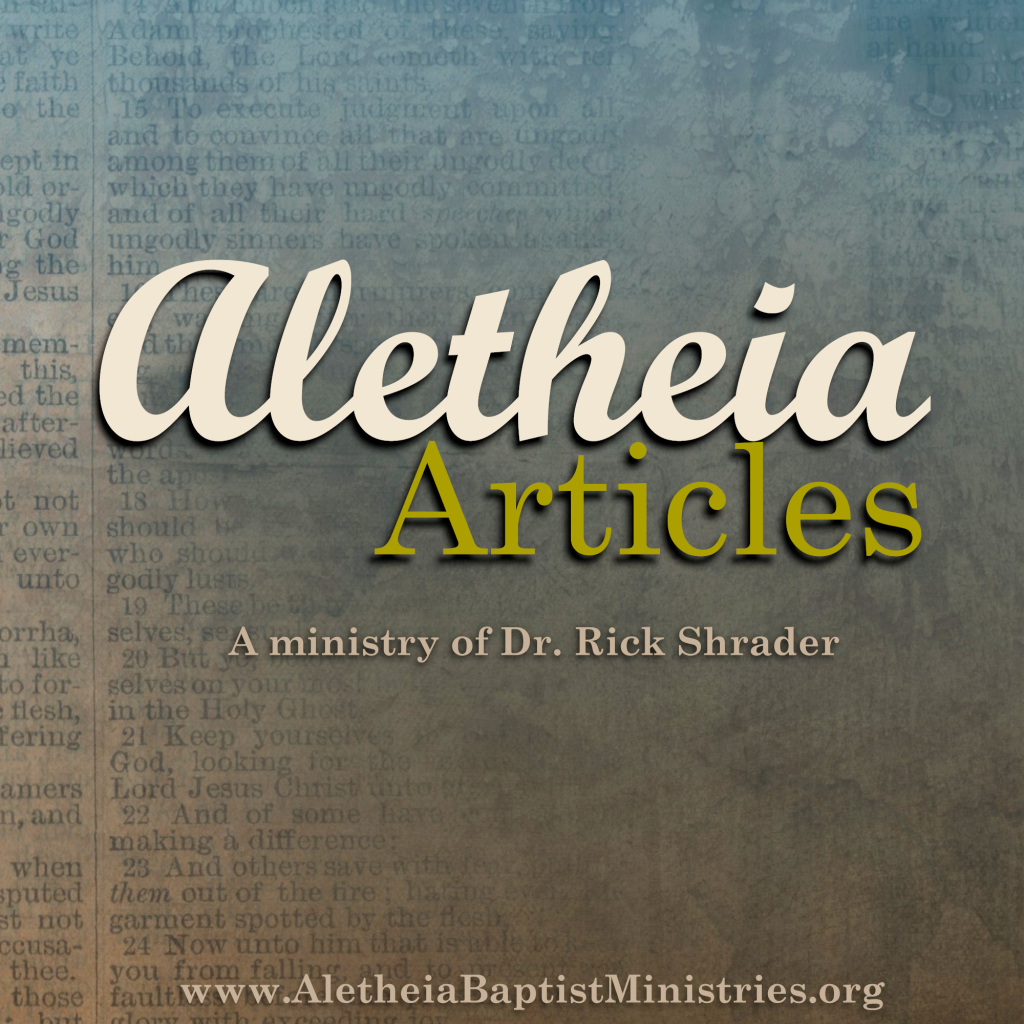
GPS – The Genesis of Life
by Rick Shrader

It is God Who gave us life. “In Him was life and the life was the light of men” (John 1:4). “Then God said, Let Us make man in Our image, according to Our likeness . . . So God created man in His own image; in the image of God He created him; male and female He created them” (Gen 1:26-27). The word “Man” is from the Hebrew word “adam” (Adam). In Gen 5:2 it is translated “Mankind” when referring to both the man and the woman. This is like the New Testament word anthropos (Man or Mankind). We are all of the race of “man” or “Mankind.” This is why the Bible always uses the masculine gender to describe the whole human race.
This was day 6 of creation and God had already created the animals on day 5. But the animals are not in God’s image, nor the angels, only man in each gender, male and female. Adam was given dominion over the animals and even named each animal, “But for Adam there was not found a helper comparable to him” (Gen 2:20).
“And the LORD God said, ‘It is not good that man should be alone; I will make him a helper comparable to him’” (Gen 2:18). This “helper” is the woman. Adam said, “This is now bone of my bones and flesh of my flesh. She shall be called Woman because she was taken out of man” (Gen 2:23). Adam also named her “Eve, because she was the mother of all living” (Gen 3:20). The image of God which began in Adam is now given to Eve and will also be passed on to each offspring of a man and a woman. Seth was born in the image of God from Adam and Eve (Gen 5:3). Every human being possesses the image of God.
In the dominion mandate given to Adam and Eve in Gen 1:26 and 28, the first two statements are to have dominion over all other creatures that God made (vs. 26) and also to “Be fruitful and multiply; fill the earth and subdue it” (vs. 28). We will deal with dominion over the earth in a later article, but here we need to see that man was created male and female for the express purpose of reproduction. On the first day of creation the earth was “void,” that is, empty. The same is said after the flood waters of Noah had receded (Gen 8:13-19). God made the animals male and female (one of each were taken on the ark) so that they would reproduce and fill the earth, but He also made mankind male and female to do the same.
It has always taken a male and a female to reproduce life whether animals or human beings. It will always take the sperm of a man and the seed of a woman to make another human being. At the time of conception this combines into XY or XX chromosomes, male or female. At that moment the DNA is set for life. The image of God is passed to this new person (an eternal soul) but also something else—the sin of our original parents, Adam and Eve (Rom 5:12). This is why “All have sinned and fall short of the glory of God” (Rom 3:23), and why “The wages of sin is death, but [and this is the good news] the gift of God is eternal life in Christ Jesus our Lord” (Rom 6:23).
We live in a mixed up time. The sinful nature which comes to each of us at conception (David said, “In sin my mother conceived me”) can sink to unbelievable lows. In Romans chapter 1, three times we are told God gave human beings up to the immoral actions of their sinful nature which had produced in them a debased or reprobate mind (Rom 1:28). But the good news is still that God loved us and gave His only Son for us that we might be saved from our sin and have eternal life (John 3:16). God loves his image-bearers and we are all image-bearers.
Book Review:
By Andreas Köstenberger
Andreas Köstenberger has written a number of books recently on the family. This one (2012) was written with David W. Jones but is essentially Köstenberger’s. It is a good synopsis of his other writings in that it is only about 175 pages and contains shorter chapters written for the layman and parents. The chapters include Marriage in the Bible, Marriage and sex, Family in the Bible, Reproduction and Parenting, Singleness, Homosexuality, Divorce and Remarriage, God, Marriage, Family, and the Church. Köstenberger has been very good on headship, complementarity, submission, life at conception, marriage as a covenant before God, discipline for children of various ages, and is moderate on divorce and remarriage. In this volume I especially liked his comments on adoption into God’s family, help for single people, and an emphasis on the local church which stands separately and, in its own right, above family relationships i.e., our relationship to brothers and sisters in Christ is eternally longer-lasting than our earthly family relationships. That can be encouraging to singles and those in broken family situations. If you want to get acquainted with Köstenberger, this is an easy way to get started.
In a section titled, “Created in God’s Image to Rule the Earth for God,” Köstenberger writes: “The fact that both men and women are created in the likeness and image of their Creator invests them with inestimable worth, dignity, and significance. God’s image in the man and the woman has frequently been identified as conveying their possession of intelligence, a will, or emotions. While this may be implied to some extent in Genesis 1:27, the immediate context develops the notion of the divine image in the man and the woman as indicating representative rule.” (p. 12).
In his conclusion he writes, “For the first time in its history Western civilization is confronted with the need to define the meaning of the terms marriage and family. The cultural crisis that rages concerning definitions of these terms is symptomatic of an underlying spiritual crisis that gnaws at the foundations of our once-shared societal values . . . Human sexuality and relationships are rooted in the eternal will of the Creator” (p. 155).
Statistics:
“Americans’ Complex Views on Gender Identity and Transgender Issues.”
“When asked what has influenced their views on gender identity – specifically, whether they believe a person can be a different gender than the sex they were assigned at birth – those who believe gender can be different from sex at birth and those who do not point to different factors. For the former group, the most influential factors shaping their views are what they’ve learned from science (40% say this has influenced their views a great deal or a fair amount) and knowing someone who is transgender (38%). Some 46% of those who say gender is determined by sex at birth also point to what they’ve learned from science, but this group is far more likely (than those who say a person’s gender can be different from their sex at birth) to say their religious beliefs have had at least a fair amount of influence on their opinion (41% vs. 9%).” Pew Research Center, 6/28/2022.
(Editor’s note: It is a shame that only 41% of people can say “a fair amount” of their opinion is influenced by their faith)
A New Year Promise
Psalm 121 has been a comfort to travelers for thousands of years. It is one of 15 Songs of Ascents (or Degrees) that the Israelites would sing as they ascended the hills of Judea to Jerusalem for the feast days. The psalm is divided into four stanzas of two verses each. Each stanza gives a promise to travelers of God’s blessing and protection. Their help comes from the Creator (vs. 2); He will not allow their foot to slip (vs. 3); the LORD will be their shade (vs. 5); and then in vs. 8, the LORD will preserve their going out and coming in. We will all be going out or coming in this year and we need the Lord’s preserving. It could even be the time of our final home-going. Matthew Henry wrote,
“He will keep thee in life and death, thy going out and going on while thou livest and thy coming in when thou diest, going out to thy labor in the morning of thy days and coming home to thy rest when the evening of old age calls thee in.” (on Psa. 121:8).



No Comments Yet